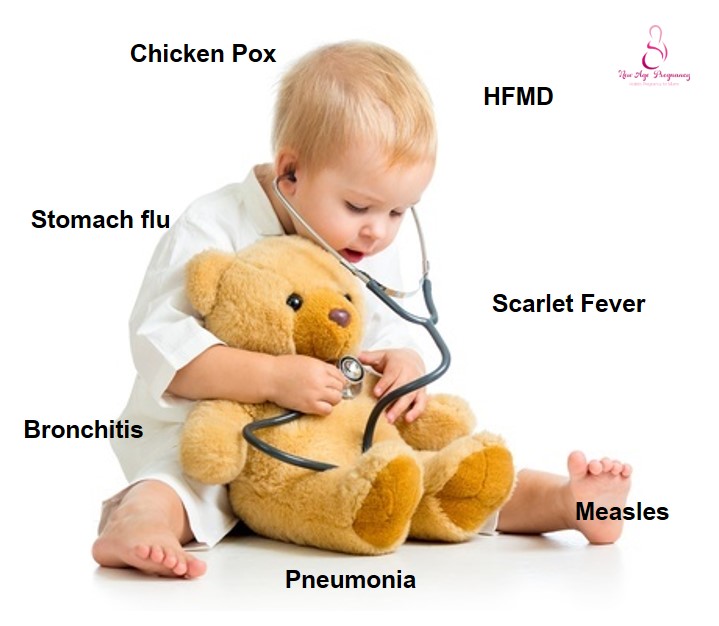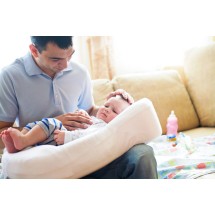
Young children often fall sick compare to adults as their immunity is still developing. That makes them extremely vulnerable to all kind of bacteria, infections and diseases like fever, cough and cold. Check out what kind of illnesses is affecting these young children and how you can keep a look out for it.
Hand Foot and Mouth Disease
Hand Foot and Mouth Disease also commonly known as HFMD can affect very young children even babies. It has become a common illness these day. How to you know if your child is infected? Check their mouth first, it often starts in the mouth where you can spot prominent sores or blisters. Next, their palm and foot will also develop red spots. HFMD is highly infectious and adults can get it too! Consult a doctor immediately and allow the child to drink more water and get ample of rest at home.
Chicken Pox
Chickenpox is a highly contagious airborne disease which can be easily spreads from an infected child or person through direct contact or even coughing and sneezing. How to you know if your child is infected? It often starts with a fever, follow by red and itchy blisters on the body and face. Chickenpox can be prevented through vaccination.
Scarlet Fever
Scarlet fever is a contagious infection that often accompanied with strep throat. This form of fever causes rashes outbreak on the child’s body. You can relate the rashes to small red bumps and is rough to the touch. White spots may appear on the tongue and the inner throat. It can be treated with antibiotics that is prescribed by the doctor.
Stomach flu (Gastroenteritis)
Stomach flu is not a flu but an inflammation of the lining of the digestive tract. It is highly contagious and can affected a child through contaminated food or sharing food or utensils with the infected child. Even contact with the infected faecal can cause your child to be infected. How to you know if your child is infected? If your child is observed to have repeated diarrhoea and vomiting, stomach pain, fever and body aches, consult a doctor for verification. It is important to encourage your child to take in more fluids to prevent dehydration.
Measles
Measles is a contagious viral infection that affects the respiratory system and causes the skin to develop a rash. It causes a outbreak of rashes over your whole body accompanied by flu-like symptoms, including fever and cough. Although the rate of catching Measles has reduce significantly when compulsory immunisation was administered to young children in Singapore, it can still affect children and adults. Measles is spread through an infected person when he coughs and sneezes, or even through the physical contact that he comes into with people and the surfaces he touches.
Bronchitis
Bronchitis is an inflammation of the air passages to the lungs (bronchi). When your child develops a cold or flu, the viruses can spread to the bronchi causing the airways to become swollen, blocked and inflamed. People who have chronic bronchitis are more susceptible to bacterial infections of the airway and lungs, like pneumonia. It can cause your child to be tired and has difficulty breathing. Consult a doctor for medication and encourage your child to take in more fluid (smaller portion, more frequency).
Pneumonia
Pneumonia is a serious lung infection that is more serious than bronchitis and can be a life-threatening illness. Often, symptoms of pneumonia can begin after 2 or 3 days when the child contacted a fever, cold, phlegmy cough or sore throat. Children who develop pneumonia caused by bacteria can become very sickly with a sudden onset of a high fever irregular breathing or wheezing. Antibiotics and Anti-viral medication may be required to treat this illness.
These childhood diseases can often be prevented if your child adopts good hygiene practices such as the proper hand-washing methods. Teach your child to wash her hands thoroughly with soap before every meals and after every bathroom visit. The same goes for the members in the family as well, keep the home environment safe and clean for your growing child.
By Crystal Tan






